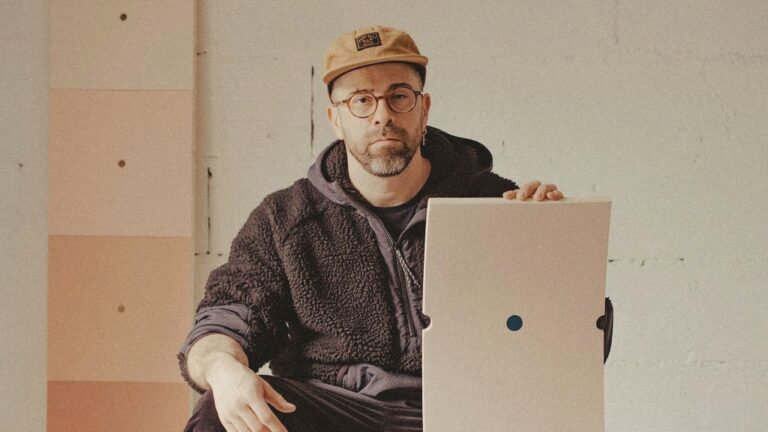
A Conversation with Alejandro Javaloyas
A Studio Visit During the La BIBI Residency
Born in 1974 in Ireland, currently residing and working in London, Sarah Dwyer’s drawing-based practice resulting in abstract paintings are marked by an exuberant color palette, intriguing marks, and an interplay of figuration and abstraction. Earlier this year, the artist showcased her latest work at Jane Lombard Gallery in New York—a series of figurative abstractions communicating stories drawn from her own life, but also Jungian archetypes and literary influences.
SW
Dear Sarah Dwyer, it is a pleasure to have you. How have you been?
SD
Thank you, Sylvia, a pleasure to talk to you. I’ve been keeping busy, recently exhibiting at Highlanes Gallery Drogheda Ireland and working in the studio towards a solo show with Fabian Lang Gallery in Zurich in early 2023, followed by a solo show in early summer at PiArtworks London.
SW
Before we dive into your most recent show titled Clatter…..THUD at Jane Lombard Gallery and the latest developments in your work, let’s discuss your personal and artistic background first. You achieved a Master’s in Painting at the Royal College of Art in London—why the arts and painting?
SD
Being Irish, I think a particular respect for the arts became ingrained from an early age. The latent poetry of the place brings about an artistic awareness, a certain self-knowledge, and criticality. Initially, I studied Economics in the UK and the USA, followed by a few years working in Environmental Economics in Paris, traveling globally with the job.
I soon realized I wanted a different intellectual and creative challenge. Undertaking courses in Printmaking & Photography in Paris, alongside working, I completed a Master’s degree in Fine Art in the UK and later a Master’s in Painting at the RCA. I became more and more compelled to pursue painting because it gave me a tangible opportunity to explore space, materiality, and identity. I have come to realize how the arts play an integral role in internalized cultural virtues, working to shape us as individuals and communities.
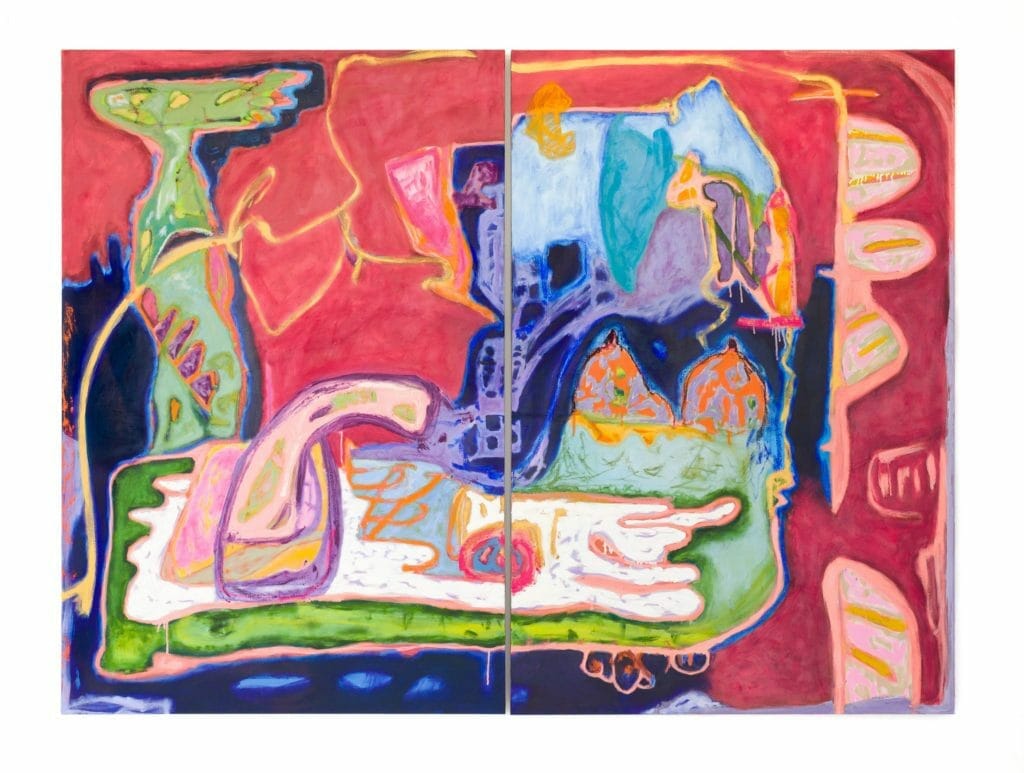
SW
The core of your artistic practice is drawing—often working almost maniacally with tremendous amounts of drawings in a short period. One could argue that the drawing process is marked by intuition, spontaneity, and virtuosity. How do you approach and value this aspect of your creative process? Is drawing where it all starts for you—not only with a single painting but for you as an artist and person in general?
SD
Currently, life drawing classes held weekly at a local London pub anchor my practice. It all happens in a relaxed environment with life models of all shapes and sizes of every human type. While the gear change provides some critical downtime to recharge the tank, it’s also a crucial stage in my ideation process, providing much of the raw material for my painting practice.
The drawings are exploratory and loose, and I keep the pace fast, so the lines are playful and fresh. I tend to view life drawing as the rehearsal before the main performance. When I rework the drawings on the canvas, I’ll edit them down and rework them, pushing and pulling the forms into shape. Intuitively, I am drawn towards the off-kilter, out of tune, tilted, crumpled, and bent. I often disrupt composition and create a discordant, awkward move on the surface.
I feel drawing itself is about turning the page, challenging the page before it, almost like counteracting your last move. I like to be constantly in motion, trying new things, questioning what exists already, and exploring what could.
SW
One could describe your paintings as revisiting the familiar, processing your everyday surroundings. Could you expand on this critical notion within your visual language?
SD
Yes, I’m very interested in the everyday, authentic experience of the inhabited and observed body, and I’m also constantly reimagining those dynamics and inviting new relationships and confrontations. And it’s not only a prosaic everyday surrounding I am engaging with but also the archeological layers of psychic and collective dimensions that shape it.
My visual language infers this complexity with the changes in spatial density and the appearance of the body and bodily appendages in various states and attitudes, appearing and disappearing on the surface, drawing the viewer and myself into the negation of the figure historically.
SW
The final result of these ‘revisitings’ has a very playful character. One can identify the different stages of the picture by following the visual traces of the process and the gestures by the artist. As a result, what takes the upper hand—the abstract picture as an image or the process to achieve it?
SD
There is a playful component. The process of making is like ‘play’ in its most profound sense; play allows for experimentation, it’s absorbing, and it happens in an unselfconscious space. The canvas contains a physical recording of all the many actions (and often their counter-actions) and their implicated emotions—it’s like a storage vessel.
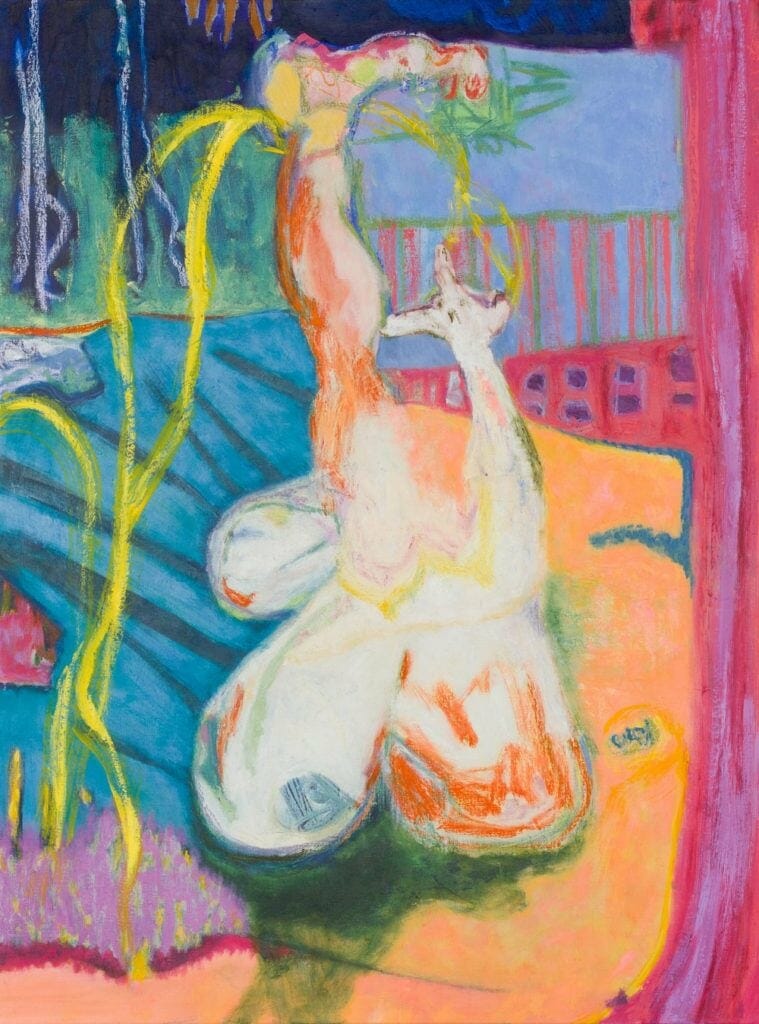
SW
Your most recent works show a clear tendency towards figuration. However, it seems as if this tendency or affinity towards figuration was always there, residing in lyrical abstraction. Your earlier abstract pictures always had this sense of space—having a picture plane in the abstraction. Could you please elaborate on your earlier abstract work?
SD
Interestingly, earlier works are understood as being reasonably abstract. As an artist, I understood them always to lie between abstraction and figuration. They veer one way or the other, having a staccato cadence between works. Paintings often appear densely worked, the result of repeated application and erasure, where the brush moves between areas of impasto, chalky whitewashes of paint, and sketched lines that seem to reveal an amorphous shape or corral a cluster of forms.
In earlier works, spaces are inhabited by forms that might have figurative qualities, most obviously personality, but also amorphous, distorted, ambiguous limbs or heads and genitals. I’m interested in exploring this physical reality of existing in space—working to erase or promote various elements. I also play with borders and framing devices to engage with frontiers and comment on the closed field of a painting.
My work has become more figurative but keeps these abstract concepts alive and kicking. There is a refusal to come down on either side of the abstraction-figuration fence because I enjoy the confused middle ground where there is potential for suggestion, deception, and cheekiness.
SW
From a retrospective point of view, it feels as if these new abstract figurations were inevitable. They seem to emerge naturally from your previous work and development. What do you think about this development from a retrospective point of view?
SD
This reminds me of a T.S. Eliot quote:
“The past is altered by the present as much as the present is directed by the past.” (T.S. Eliot, Tradition and the Individual)
I feel all painters teach themselves; the past is constantly permeating unconsciously, both in looking at the work around you and your own work historically. Using my abstract lexicon of mark-making developed over a 15-year period, at the moment, my diving-off point is life drawing, with a nod and a wink to the history of abstract figuration.
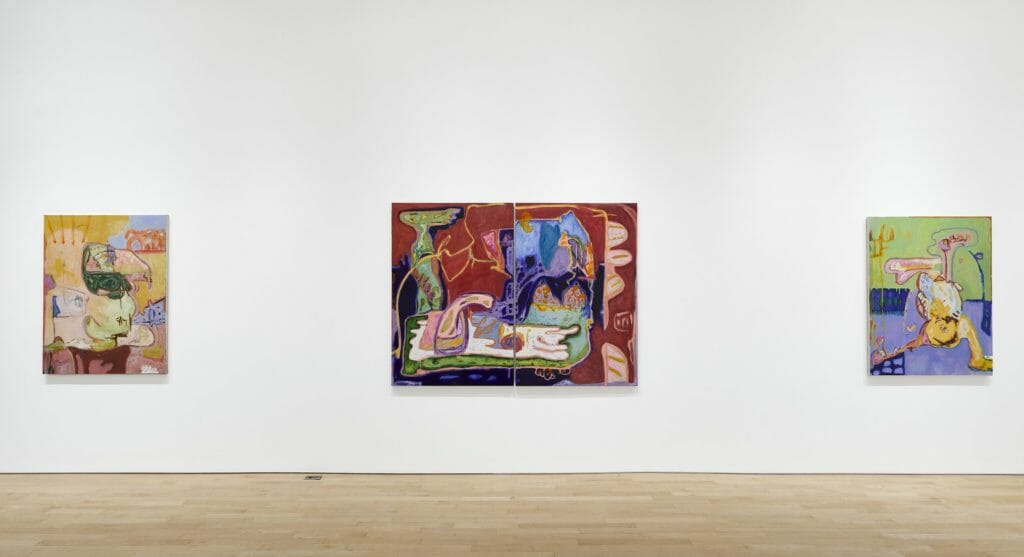
SW
Your latest works communicate an unexplainable rhythm—or sometimes a lack of rhythm. This notion is strongly connected to the title of your previous show at Jane Lombard Gallery, Clatter…..THUD. Could you please expand on the title, the show, and this ubiquitous notion of the rhythm of gesture and line in your work?
SD
Clatter…..THUD attempts to vocalize the drama and suspense in my work while alluding to the fact that the pieces in the show are making a new type of noise—they are bouncing to a different beat.
The transformation speaks to the weight of life experience that accumulates with time and as an ode to the body as a complex locus of emotion. Across my works, the figure itself becomes an expressive device, moving and contorting like a boxer, dancing and jabbing in front of the canvas.
I tend to disrupt my pieces with visceral marks and colliding lyrical lines, cutting across elemental forms that lay on top of multi-dimensional swathes of color. My use of directional brushwork and gestural marks punctuate the paintings, revealing layers of pattern that vibrate with energy, creating a drama both for myself and the viewer, keeping me on my toes.
SW
The body in the form of anthropomorphic shapes and the human psyche in the expressive nature of the works are two critical perspectives throughout the show and your oeuvre. Let’s start with the first; how do you approach or experience the body in your artistic practice? What is your intention in this approach?
SD
I take a physical approach to painting in the studio; punching, jabbing, boxing—it’s a battle. Abstraction can be a real fight, especially as I am a small body, often taking on a canvas bigger than myself, digging and dragging forms and colors across the surface. This performative aspect is somehow essential at times.
I enjoy painting when there is somebody else in the studio to have a conversation with, whether that be studio assistants, curators, or studio visitors. I tend to switch off while I converse; I perform for my audience. Painting for the maker is not so retinal; it is a full-body experience.
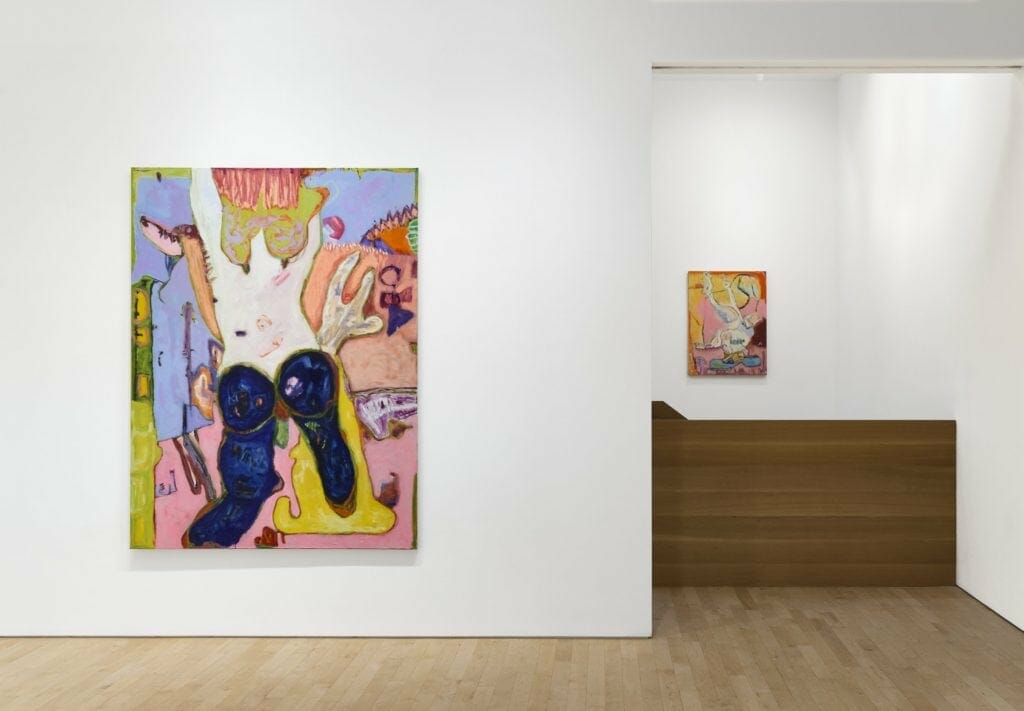
SW
By doing so, the body also seems to become a symbolic construction; one could almost argue, a metaphor in the tradition of feminist theory and the body as a battlefield.
SD
Bringing life drawing into my practice has allowed me to recognize the vulnerability of my own body (and all our bodies) and what it means to be me in an ever-changing female body that has, at times, had to go to war with itself. I want to embrace the seams, creases, and cracks of flesh, the weight, and the lines that traverse the skin.
This exploration of my own relationship with the body and by confronting the experiences of which the body keeps score means that I am able to scrutinize the distinctly female burden to ‘carry it with you on both your hips and your shoulders.’ In this way, my expanded drawing practice becomes a tripartite act of survival, celebration, and achievement.
SW
In addition, one cannot help but notice references or similarities to the grotesque bodies in Jenny Saville’s pictures, the expressive traces in the drawing of the figures of Alice Neel, or the honest and unfiltered examination of the human psyche in the wake of Tracey Emin. From an art historical perspective, what masters and contemporaries—figurative and abstract—have been of vital influence?
SD
I have an absolute hoard of vital influences, alive and dead, that I draw from throughout my process. I look to these sources for support, inspiration, chromatic guidance, compositional direction, … Anything they can teach me!
While working, I often glance through books (art and poetry), look through interviews, or listen to artist podcasts from which I take inspiration and encouragement in various ways. My studio is full of art books ranging from both old masters and contemporary artists collected over many years, including painters, sculptors, and print-makers. Influences at differing times have included Andrea Mantegna, Francisco Goya, Edvard Munch, The Cobra Group, L’art Brut, Ferdinand Hodler, Egon Schiele, Arte Povera, Philip Guston, Arshile Gorky, Eva Hesse, Willem de Kooning, Lee Krasner, amongst many others.
Artists that have impacted me early in my studies and career, like Tracey Emin, Louise Bourgeois, Egon Schiele, and Francisco Goya, all have an incredible ability to embrace the fragility of both body and mind while also promoting its courage and strength. More contemporary artists, like Amy Sillman, Rose Wiley, Phylidda Barlow, and Tal R, are all artists whose work strongly resonates with me.
Opening myself up to this chorus of historical and contemporary voices creates a rich art historical context for my work to live in. Painting might be a solitary activity, but in a sense, the paintings are very much a communal effort.
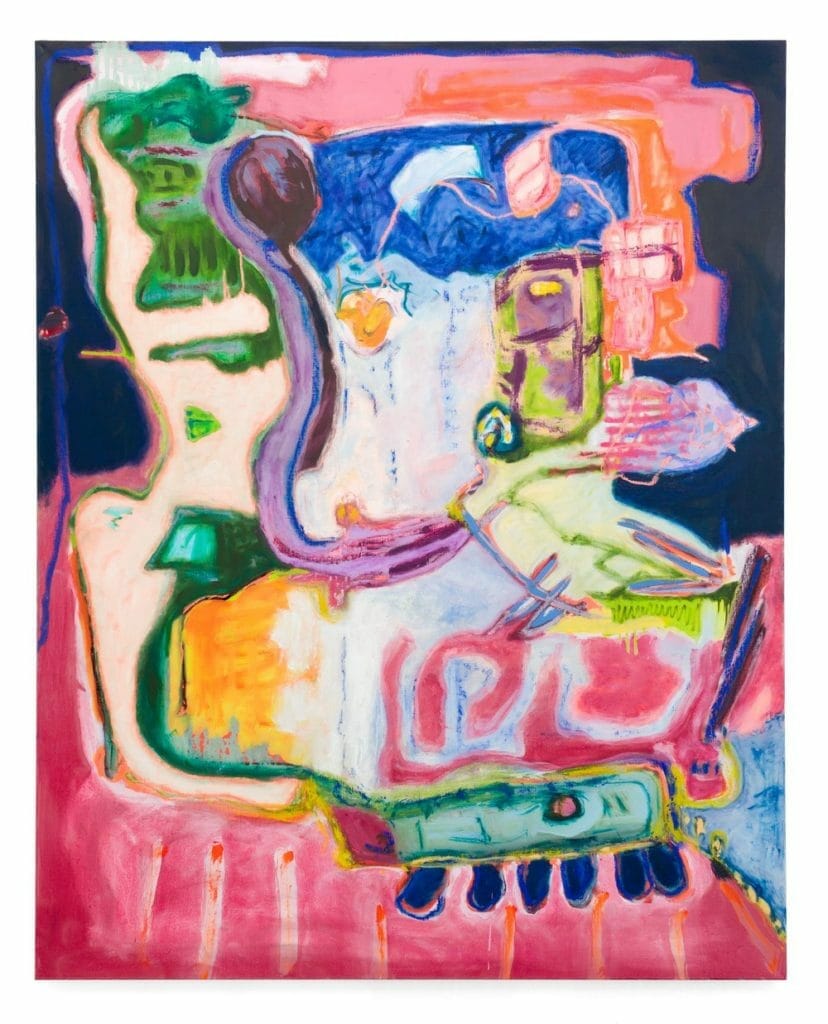
SW
To conclude, what can we expect in your ongoing journey and development as an artist in the coming years?
SD
I am starting to take the discourse I’ve developed in painting into experimental sculpture—using it in dialogue with the paintings and drawings. In between figuration and abstraction, I am continuing my relationship with the nature of the gestural mark and line.
SW
It has been a true pleasure. Thank you for your time, answers, and art.
SD
Thank you, the pleasure has been all mine!
Upcoming shows: Fabian Lang, 2023, Zurich. Piartworks, May – June, Spring 2023. London, early summer.
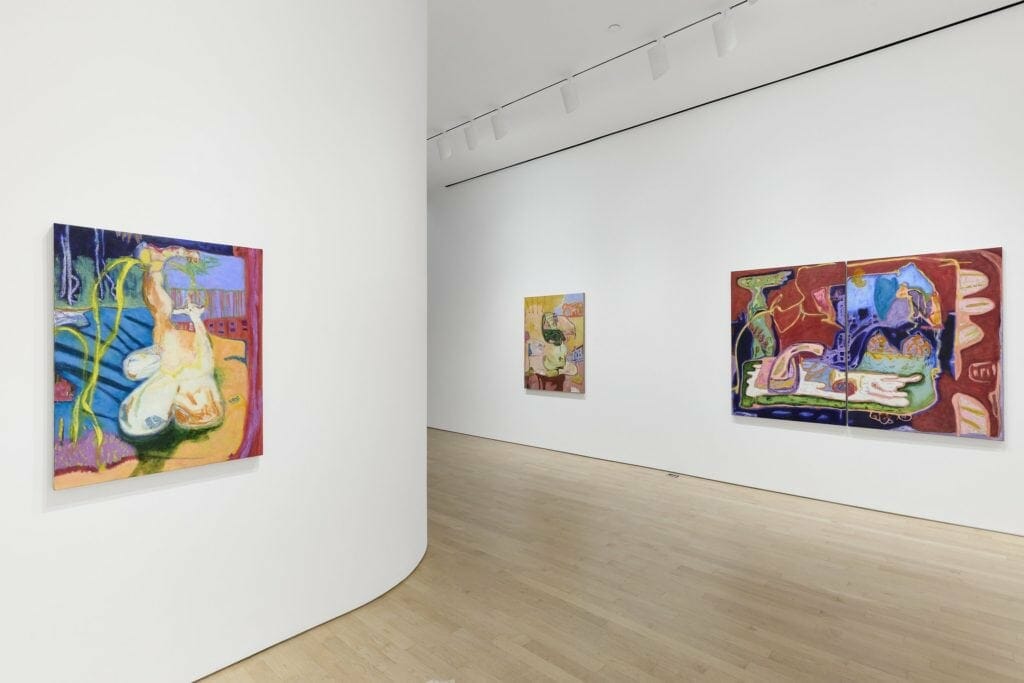
Last Updated on May 2, 2023

A Studio Visit During the La BIBI Residency
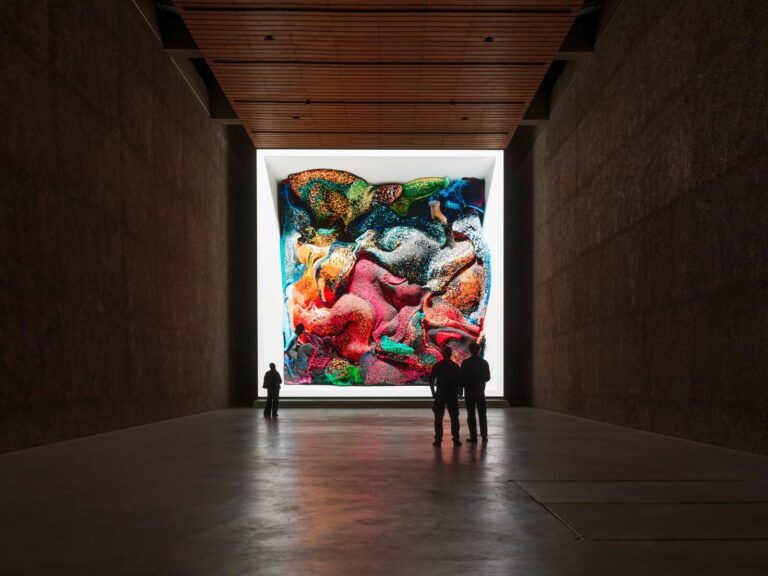
A Reasoned Anthology